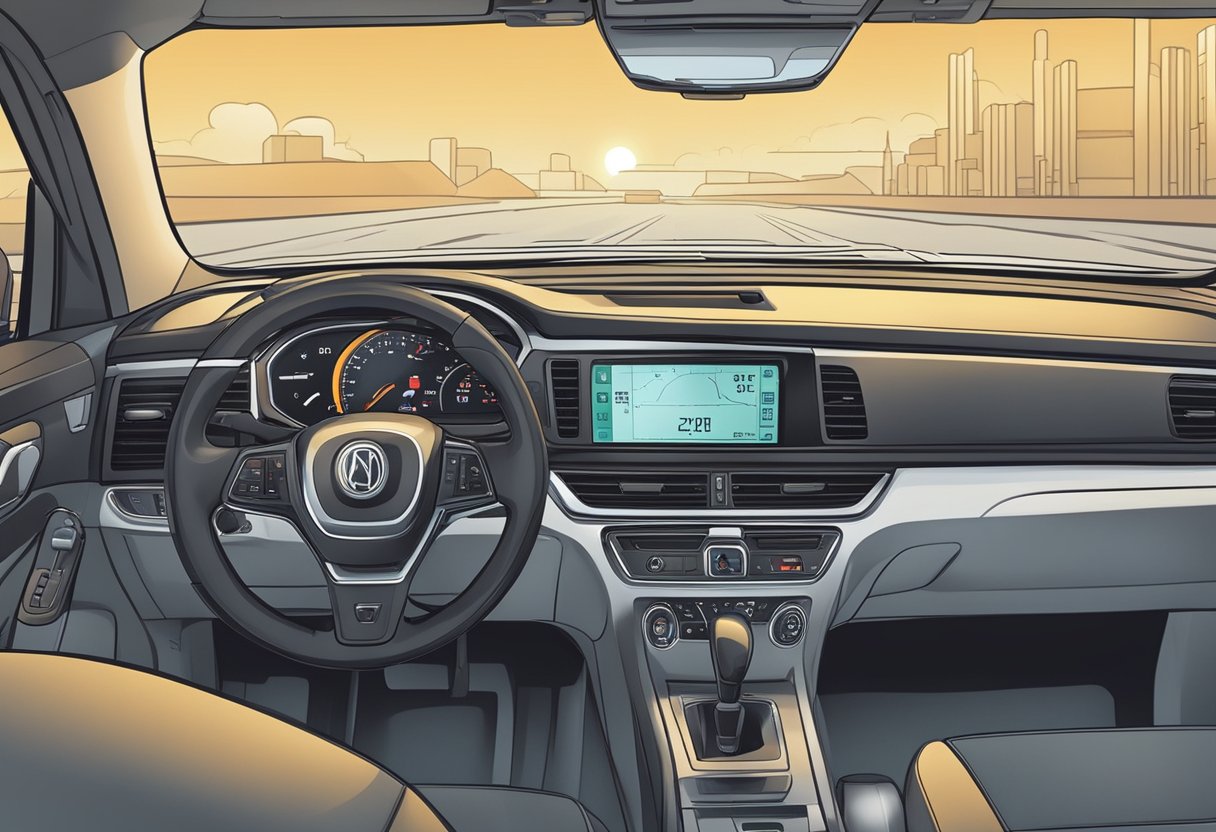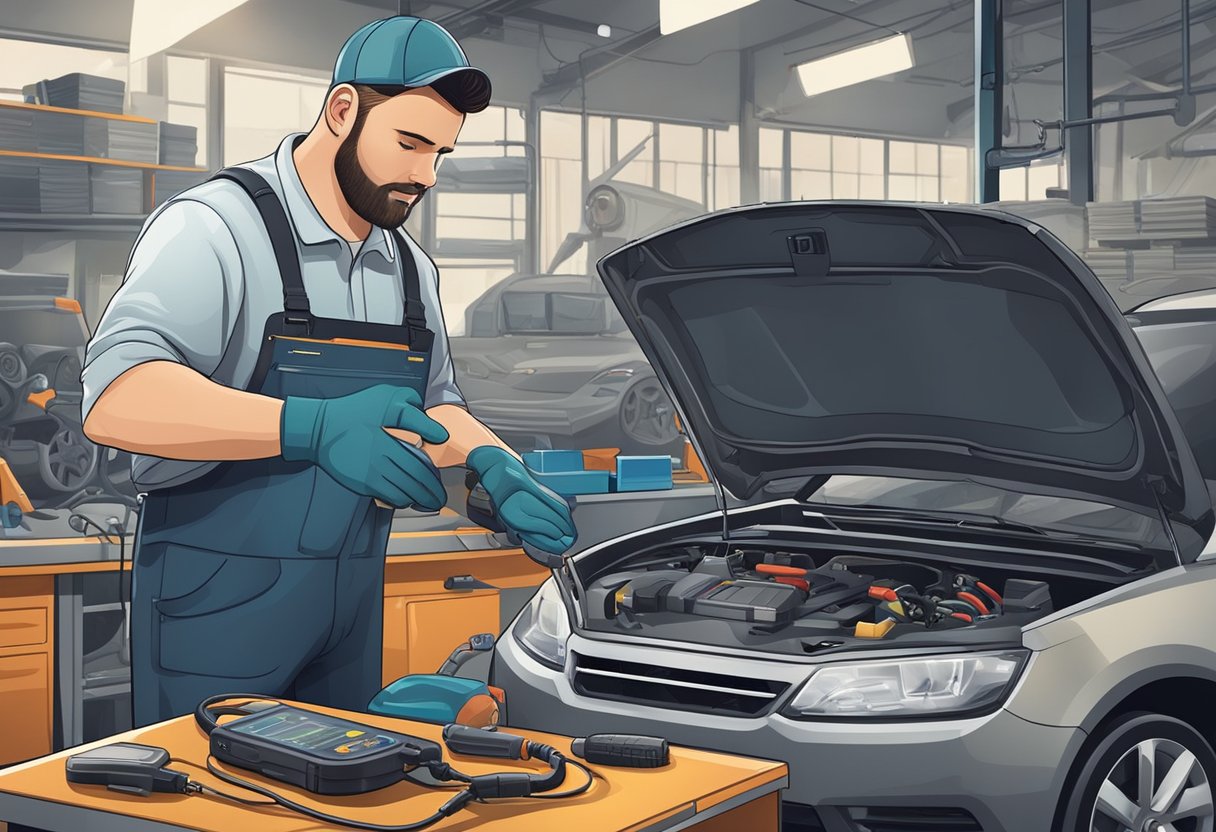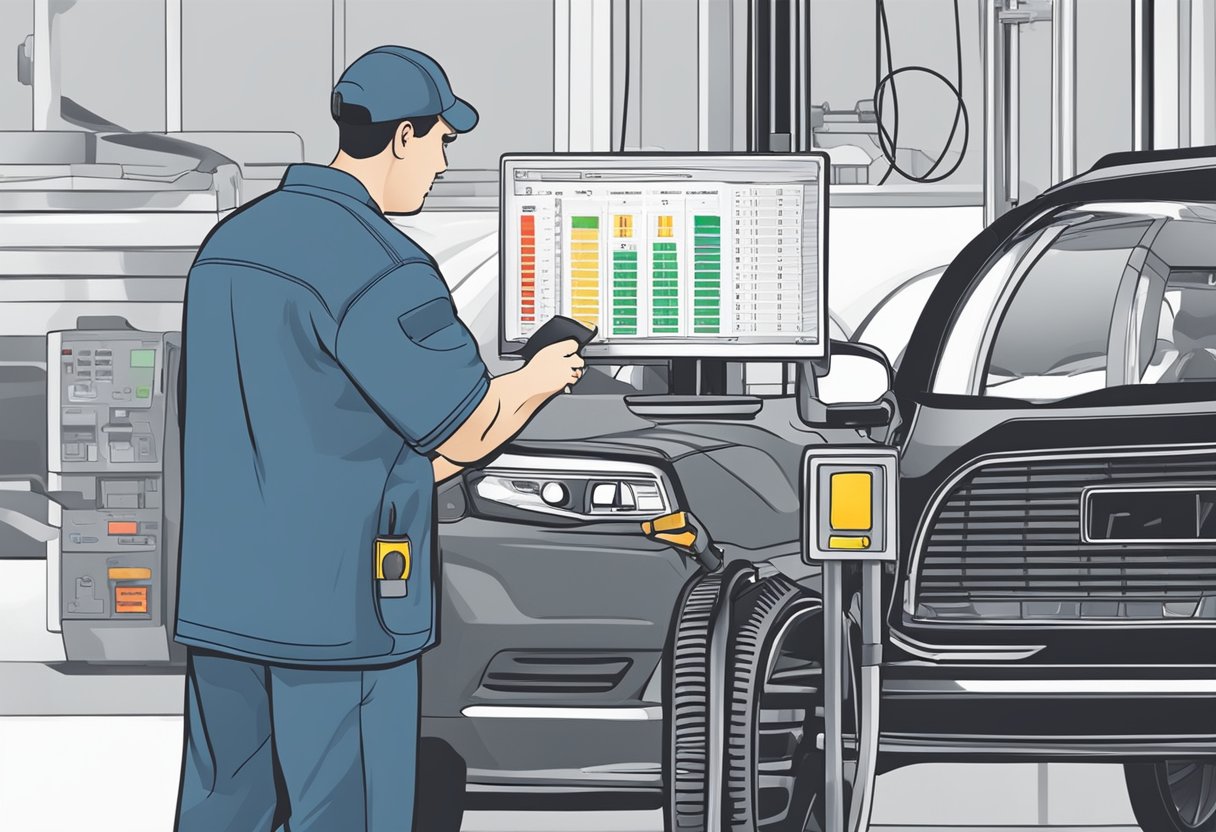If you are a vehicle owner, you may have encountered the dreaded check engine light at some point. While there are many reasons why this light may turn on, one common culprit is an error code P2097: Post Catalyst Fuel Trim System Too Rich. This code indicates that the fuel mixture in your car’s engine is too rich, meaning there is too much fuel and not enough air.
When your vehicle’s fuel mixture is too rich, it can cause a variety of issues. Not only can it trigger the check engine light, but it can also lead to decreased fuel efficiency and increased emissions. If left unaddressed, it can even damage your car’s catalytic converter, which is responsible for reducing harmful emissions. Therefore, it is important to troubleshoot and fix error code P2097 as soon as possible.
Understanding Error Code P2097
If you have encountered Error Code P2097 on your vehicle, it means that the Post Catalyst Fuel Trim System is too rich. This error code is triggered when the fuel mixture in the engine is too rich, meaning that there is too much fuel in the air/fuel mixture.
The Post Catalyst Fuel Trim System is responsible for maintaining the correct air/fuel ratio after the catalytic converter. When this system detects that the air/fuel mixture is too rich, it will trigger the Check Engine Light and store Error Code P2097 in the vehicle’s computer system.
There are several possible causes for Error Code P2097, including a faulty oxygen sensor, a malfunctioning catalytic converter, a clogged air filter, or a leak in the exhaust system. It is important to diagnose and repair the underlying issue as soon as possible to prevent further damage to the vehicle and to ensure that it is running efficiently.
To troubleshoot Error Code P2097, you may need to use a diagnostic scanner to read the code and identify the specific issue. Once you have identified the underlying cause, you can take the necessary steps to repair or replace the faulty component.
In summary, Error Code P2097 indicates that the Post Catalyst Fuel Trim System is too rich, which can lead to decreased fuel efficiency and potential damage to the vehicle. By understanding the potential causes and taking the necessary steps to diagnose and repair the issue, you can ensure that your vehicle is running smoothly and efficiently.
Diagnostic Tools and Equipment
When troubleshooting error code P2097, having the right diagnostic tools and equipment can make the process much easier. Here are some of the tools you will need to diagnose and fix this issue.
OBD-II Scanner
An OBD-II scanner is a must-have tool for diagnosing error codes like P2097. This device plugs into your car’s OBD-II port and can read and clear error codes. It can also provide real-time data about your car’s performance, including fuel trim levels. Make sure to use a scanner that is compatible with your car’s make and model.
Fuel Pressure Gauge
A fuel pressure gauge is another essential tool for diagnosing P2097. This tool measures the pressure of the fuel in your car’s fuel system. If the pressure is too high, it could be causing the post-catalyst fuel trim system to run too rich. Make sure to use a gauge that is compatible with your car’s fuel system.
Exhaust Gas Analyzer
An exhaust gas analyzer can help you determine if your car’s emissions are within acceptable levels. This tool measures the levels of various gases in your car’s exhaust, including oxygen, carbon monoxide, and nitrogen oxide. If the levels are too high, it could be a sign that the post-catalyst fuel trim system is running too rich.
By using these diagnostic tools and equipment, you can quickly and accurately diagnose the cause of error code P2097. With the right tools and a bit of knowledge, you can fix this issue and get your car running smoothly again.
Can the Fixes for Post Catalyst Fuel Trim System Error Code P2097 also Apply to Main Catalyst Efficiency Error Code P0422?
When dealing with the error code P0422 for “main catalyst efficiency below threshold,” it may be worth exploring if the fixes for the post catalyst fuel trim system error code P2097 could also be applicable. By examining common troubleshooting steps and approaching the issue holistically, it might be possible to find overlapping solutions that address both error codes effectively.
Troubleshooting Steps
If you’re experiencing error code P2097 on your vehicle, there are several steps you can take to troubleshoot the issue. Below are some common steps you can take to diagnose and fix the problem.
Check for Additional Error Codes
Before proceeding with any other troubleshooting steps, it’s important to check if there are any additional error codes present. This can be done using an OBD-II scanner. If there are other error codes present, it’s important to address those first before attempting to fix the P2097 error code.
Inspect the Oxygen Sensors
One of the most common causes of the P2097 error code is a faulty oxygen sensor. Inspect the oxygen sensors to make sure they are functioning properly. If the sensors are dirty or damaged, they may need to be replaced.
Examine the Fuel System
Another possible cause of the P2097 error code is a problem with the fuel system. Check the fuel pressure and fuel injectors to make sure they are functioning properly. If there are any issues with the fuel system, they may need to be repaired or replaced.
Evaluate the Exhaust System
The P2097 error code can also be caused by a problem with the exhaust system. Check for any leaks or damage in the exhaust system, including the catalytic converter. If there are any issues with the exhaust system, they may need to be repaired or replaced.
By following these troubleshooting steps, you can diagnose and fix the P2097 error code on your vehicle. If you’re unsure about any of these steps, it’s always best to consult a professional mechanic.
Common Causes and Solutions
If you are experiencing the P2097 error code, there could be a number of reasons why. Here are some of the most common causes and solutions to help you troubleshoot the issue.
Faulty Oxygen Sensor
One of the most common causes of the P2097 error code is a faulty oxygen sensor. The oxygen sensor is responsible for monitoring the exhaust gases and sending data to the engine control module (ECM). If the oxygen sensor is not functioning properly, it can send incorrect data to the ECM, which can cause the post catalyst fuel trim system to become too rich.
To fix this issue, you will need to replace the faulty oxygen sensor. This is a relatively simple process that can be done with a few basic tools.
Leaking Fuel Injector
Another common cause of the P2097 error code is a leaking fuel injector. The fuel injector is responsible for delivering fuel to the engine. If the injector is leaking, it can cause the post catalyst fuel trim system to become too rich.
To fix this issue, you will need to replace the leaking fuel injector. This is a more complex process that may require the assistance of a professional mechanic.
Exhaust Leak
An exhaust leak can also cause the P2097 error code to appear. If there is a leak in the exhaust system, it can allow air to enter the system, which can cause the post catalyst fuel trim system to become too rich.
To fix this issue, you will need to locate and repair the exhaust leak. This may require the assistance of a professional mechanic.
Engine Control Module Issues
Finally, the P2097 error code can also be caused by issues with the engine control module (ECM). If the ECM is not functioning properly, it can send incorrect data to the post catalyst fuel trim system, which can cause it to become too rich.
To fix this issue, you will need to have the ECM inspected and repaired or replaced if necessary. This is a complex process that should only be attempted by a professional mechanic.
Preventative Measures and Maintenance
To prevent Error Code P2097 from occurring, it is important to perform regular maintenance on your vehicle. This includes changing the engine oil and air filter at the recommended intervals, as well as ensuring that the fuel injectors are clean and functioning properly.
In addition, it is important to use high-quality fuel and to avoid overfilling the gas tank. Overfilling can cause fuel to enter the evaporative emissions system, which can lead to the post-catalyst fuel trim system becoming too rich.
Regularly inspecting the exhaust system for leaks or damage is also important. Leaks in the exhaust system can cause air to enter the post-catalyst fuel trim system, which can lead to an incorrect fuel mixture and trigger Error Code P2097.
Finally, if you notice any unusual smells or sounds coming from your vehicle, it is important to have it inspected by a qualified mechanic. Catching issues early can prevent them from causing more serious problems down the line.
By following these preventative measures and performing regular maintenance on your vehicle, you can help prevent Error Code P2097 from occurring and ensure that your vehicle runs smoothly for years to come.
As an Amazon Associate we earn from qualifying purchases.















